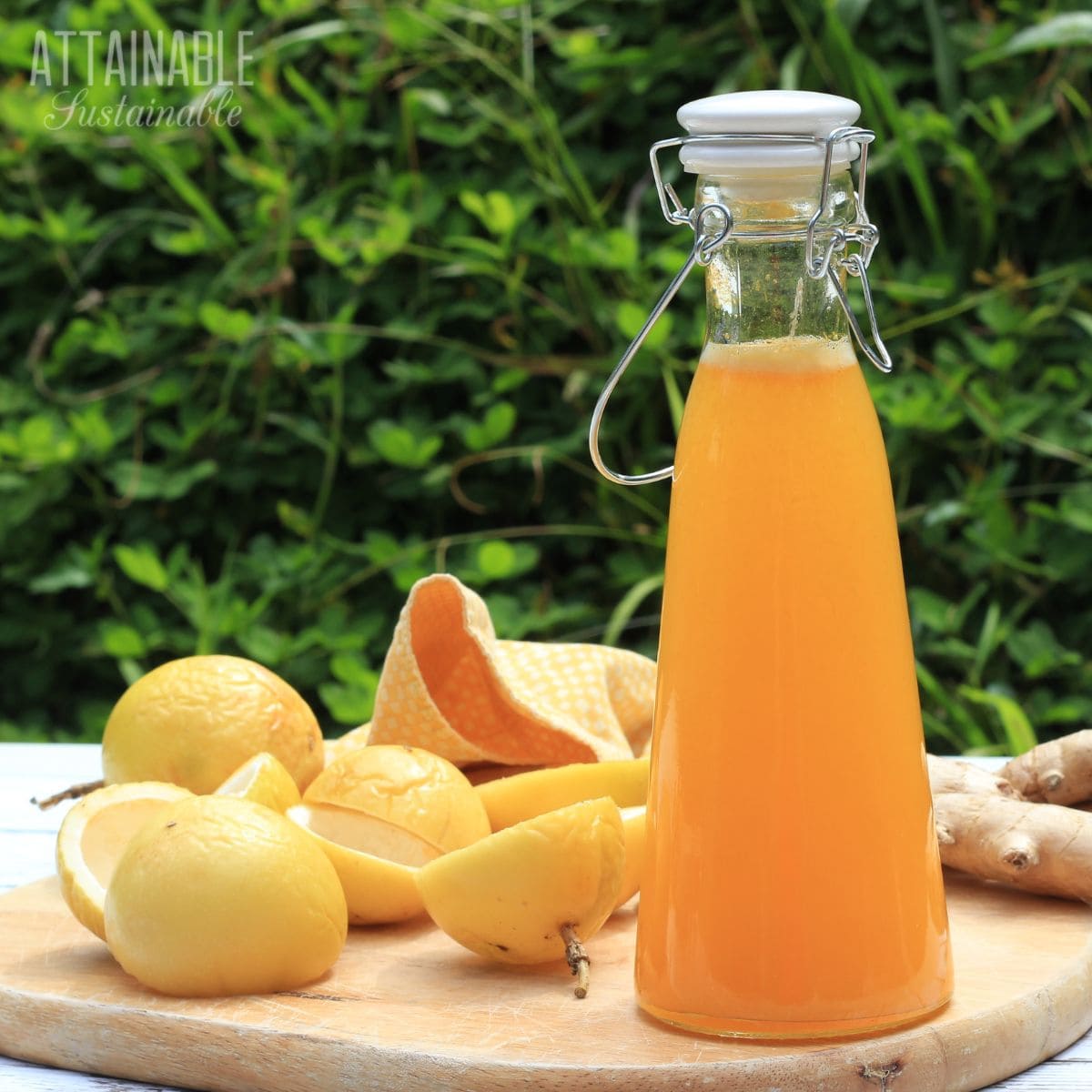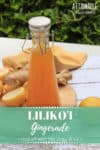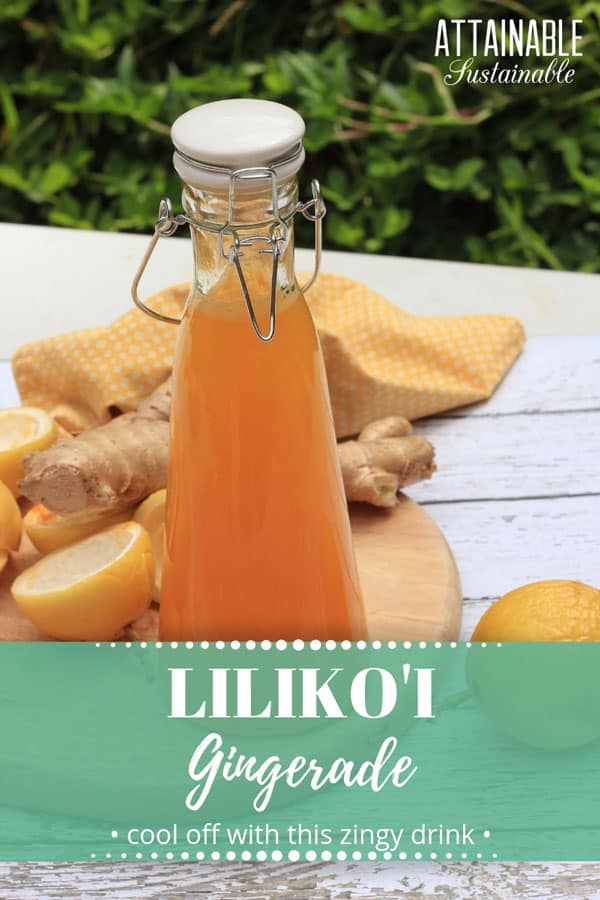An icy cold beverage is the perfect way to finish off a hot day in the garden. Even better if that beverage starts with fresh juice like this lilikoi gingerade.
Fresh Lilikoi Gingerade
These summertime coolers might be just what you need! And making them with fresh fruit means they’re a bit healthier, too. No plastic jugs of “juice flavored” drinks here.
Filled with small black seeds wrapped in a juicy orange membrane, liliko‘i — or passion fruit — grows on a vine that can get rambunctious in our mild Hawai‘i climate. I’m told there have been attempts to eradicate the vine as a pest. I consider myself lucky to have one growing in my backyard. And hey, don’t tell anyone but we’re planting a few more!
There are a number of varieties of passion fruit. The yellow liliko‘i is the most common, but there’s also a purple variety and one known as Jamaican liliko‘i or peach liliko‘i.
I’m working on getting all three varieties (along with a giant passion fruit that is more melon-like) established here. Once they start fruiting, liliko‘i vines produce bucketloads of fruit.
5 Easy Steps to Transform Your Pantry!
Ready to switch from store bought to homemade? Let me help you make some changes! Grab my FREE five-part guide to getting started.
One can only eat so much liliko‘i fresh out of hand, though, so I find myself juicing much of my bounty to turn into liliko‘i jelly and liliko‘i bread. I also use passion fruit juice to make a knock-your-socks-off liliko‘i gingerade.
It’s one of my favorite summer drink recipes. You can freeze this passion fruit gingerade so you always have some on hand, too. (It’s always a treat for guests who don’t have access to fresh passion fruit!) Here are some ideas for freezing it without using plastic containers.
Try this watermelon iced green tea refresher, too!
★ Did you make this lilikoi gingerade? Don’t forget to give a star rating below!

Passion Fruit Gingerade
Ingredients
- 6 cups water
- 1 6" piece of fresh ginger
- 2 cups lilko‘i juice (how to juice liliko‘i)
- 1 cup honey or organic sugar
Instructions
- Wash the unpeeled ginger and cut into 1″ lengths; place in a blender with 6 cups water. Pulse until ginger is chopped.1 6" piece of fresh ginger, 6 cups water
- Strain ginger water into a pitcher or a half-gallon size Ball jar. Discard ginger.
- Stir in liliko‘i juice and sugar. Chill and enjoy.2 cups lilko‘i juice, 1 cup honey
Notes
- You can freeze this passion fruit gingerade so you always have some on hand, too. (It’s always a treat for guests who don’t have access to fresh passion fruit!) Here are some ideas for freezing it without using plastic containers.







Easy to make and so refreshing. Thanks for the recipe!
This looks delicious! It’s too cold where I live to grow any type of the vines, but we can get the fruit from the shop! I’ve just used up our last lot making a paleo coconut banana bread…but next time we get a bunch I will make this!
I just want to mention that I made this tonight with lemon juice and honey. You only need about 3/4 cup of lemon juice and 1/2 to 3/4 cups of honey. I’m lucky because that is all the lemon juice I could get to make it. This tastes very good and refreshing.
Oh, good to know!
Oh, Kris…this sounds sooo good!
I haven’t heard about the efforts to eradicate liliko’i vines! That would be horrible!..They might be invasive, but they are useful and can be controlled, contrary to the banana poka vines, which have pretty flowers but are not edible (although a case can even be made that the vines can be used for weaving baskets and wreaths!)